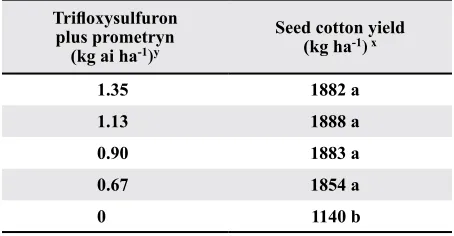Evaluation of Trifloxysulfuron plus Prometryn for Weed Control in Cotton (Gossypium hirsutum L.)
Full text
Figure




Related documents
As such, this study was carried out with two objectives: first, to evaluate the cultural appropriateness of the program — that is, to which degree were the mate- rials and activities
Japanese and U.S. measures is more limited. While higher EA liquidity tends to be followed by increases in excess liquidity elsewhere, the observed coefficients of correlation
A miniature instrument of JET (“mini” JET) was implemented on remolded soil samples of three different in-situ scale ratios (1:1, 1:30, and 1:50) and with three
In this study, a water quality model of F ı rt ı na Creek was used as an evaluative tool to estimate the spatial distribution of several water quality related variables together
Therefore, in order to conserve the remaining diversity of herpetofauna, we recommend (1) strict protection of the native scrub forest remnants in the RB Estates along
Population status and species diversity of wetland birds in the Rapti and Narayani rivers and associated wetlands of Chitwan National Park, Nepal. -- Bed Bahadur Khadka, Paras